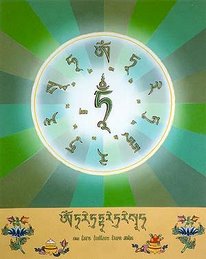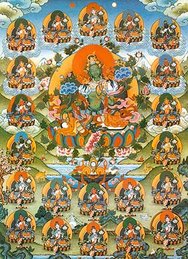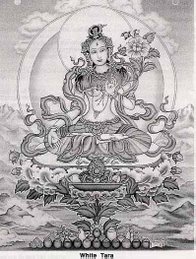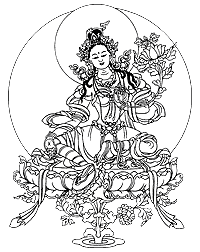
Tara’s Origin is not Buddhism, before adopted by “Buddhism”, Tara was worshipped as one of the Mother Goddess figures in Hinduism. Feminine principle was not venerated in “Buddhism” until somewhere around the 4th century CE, and Tara entered Buddhism around the 6th century CE during the ear of Pala Empire as an important bodhisattva figure.
At last, a feminine principle makes has made its first appearance in “Buddhism” as she was widely known as "Mother of Perfected Wisdom". As Tara’s being “adopted” by Buddhism, Tara is also associated with the motherly qualities of compassion and mercy. Tara became very popular object of worship and was an object of “Tantric” worship as well since the 7th century C.E.
With the movement of Indian Buddhism into Tibet, the practices of Tara became incorporated with Tibetan Buddhism and remains very popular in Tibet and Mongolia until today.
According to Buddhism, Tara was born from the tears of Avalokiteshvara the bodhisattva of compassion. It is believed that he wept as he looked upon the world filled of suffering sentient beings, and he wept so much until his tears had formed a lake in which a lotus sprung up and bloomed. As soon as when the lotus opened, Tara was revealed. It was believed that White Tara born from the tears of Avalokiteshvara's left eye and the Green Tara from the right.
Another legend states that Tara was born from a beam of radiant blue light emanating from one of the eyes of Avalokiteshvara. Both Green and White Tara symbolize the compassion without ending of the goddess who labors day and night just to relieve our suffering. Green Tara’s half-open lotus, represents night, and White Tara’s full bloom lotus, symbolizes day. Green Tara also embodies virtuous activity while White Tara displays serenity and grace.
Tara especially came to be associated with the historical “First” Buddhist king of Tibet, Srong-brtsan-sgam-po (d. 649). He has two Beautiful wife which is believed as the emanation of Tara, His wife from China was said to be an incarnation of White Tara, while his Nepalese wife as the incarnation of Green Tara. It may be that the desire to regard both these pious women as incarnations of T ara led to the concept of the goddess's green and white forms.
ara led to the concept of the goddess's green and white forms.
At last, a feminine principle makes has made its first appearance in “Buddhism” as she was widely known as "Mother of Perfected Wisdom". As Tara’s being “adopted” by Buddhism, Tara is also associated with the motherly qualities of compassion and mercy. Tara became very popular object of worship and was an object of “Tantric” worship as well since the 7th century C.E.
With the movement of Indian Buddhism into Tibet, the practices of Tara became incorporated with Tibetan Buddhism and remains very popular in Tibet and Mongolia until today.
According to Buddhism, Tara was born from the tears of Avalokiteshvara the bodhisattva of compassion. It is believed that he wept as he looked upon the world filled of suffering sentient beings, and he wept so much until his tears had formed a lake in which a lotus sprung up and bloomed. As soon as when the lotus opened, Tara was revealed. It was believed that White Tara born from the tears of Avalokiteshvara's left eye and the Green Tara from the right.
Another legend states that Tara was born from a beam of radiant blue light emanating from one of the eyes of Avalokiteshvara. Both Green and White Tara symbolize the compassion without ending of the goddess who labors day and night just to relieve our suffering. Green Tara’s half-open lotus, represents night, and White Tara’s full bloom lotus, symbolizes day. Green Tara also embodies virtuous activity while White Tara displays serenity and grace.
Tara especially came to be associated with the historical “First” Buddhist king of Tibet, Srong-brtsan-sgam-po (d. 649). He has two Beautiful wife which is believed as the emanation of Tara, His wife from China was said to be an incarnation of White Tara, while his Nepalese wife as the incarnation of Green Tara. It may be that the desire to regard both these pious women as incarnations of T
 ara led to the concept of the goddess's green and white forms.
ara led to the concept of the goddess's green and white forms.





